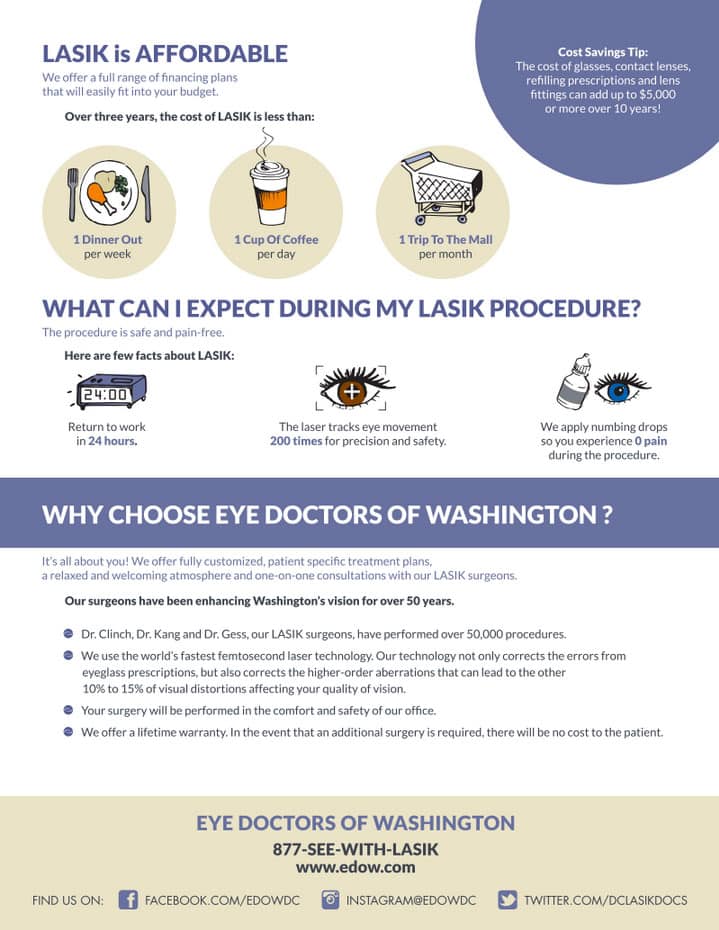How Does SMILE Eye Surgical Treatment Contrast To LASIK And PRK?
How Does SMILE Eye Surgical Treatment Contrast To LASIK And PRK?
Blog Article
Web Content Author-Munksgaard Wilder
If you've been thinking about SMILE eye surgery, you might wonder how it stacks up against LASIK and PRK. Each procedure has its very own set of benefits and factors to consider. From does cataract surgery cost to possible dangers, there are key distinctions you must understand before deciding. Recognizing these differences will certainly aid you make an enlightened option that lines up with your certain demands and expectations. Interested to recognize even more concerning just how these procedures contrast in detail? Keep discovering to get a thorough understanding of SMILE, LASIK, and PRK.
SMILE Eye Surgical Treatment Summary
If you're taking into consideration SMILE eye surgical treatment, you'll discover it to be a minimally intrusive procedure with a quick recovery time. Throughout SMILE (Tiny Incision Lenticule Extraction), a laser is utilized to develop a little, accurate laceration in the cornea to remove a small item of tissue, reshaping it to remedy your vision. This varies from LASIK, where a flap is developed, and PRK, where the outer layer of the cornea is totally gotten rid of.
Among the vital advantages of SMILE is its minimally intrusive nature, resulting in a faster healing procedure and much less pain post-surgery. The healing time for SMILE is relatively fast, with several people experiencing boosted vision within a day or 2. This makes it a popular selection for those looking for a hassle-free and efficient vision adjustment treatment. Furthermore, SMILE has been shown to have a reduced danger of dry eye syndrome compared to LASIK, making it a positive choice for individuals concerned about this prospective negative effects.
Distinctions Between SMILE, LASIK, and PRK
When contrasting SMILE, LASIK, and PRK eye surgeries, it is very important to comprehend the distinctive strategies used in each procedure for vision improvement.
SMILE (Tiny Cut Lenticule Removal) is a minimally invasive procedure that involves creating a tiny laceration to remove a lenticule from the cornea, improving it to fix vision.
LASIK (Laser-Assisted In Situ Keratomileusis) entails producing a thin flap on the cornea, utilizing a laser to improve the underlying cells, and after that repositioning the flap.
PRK (Photorefractive Keratectomy) eliminates the outer layer of the cornea prior to reshaping the tissue with a laser.
The main difference hinges on the means the cornea is accessed and dealt with. SMILE is flapless, making it an excellent option for people with slim corneas or those involved in call sporting activities. LASIK uses fast aesthetic recuperation as a result of the flap production, yet it might pose a higher danger of flap-related issues. PRK, although having a much longer recuperation period, avoids flap-related concerns altogether.
Comprehending these differences is important in selecting one of the most ideal treatment for your vision modification requirements.
Benefits And Drawbacks Comparison
To evaluate the benefits and drawbacks of SMILE, LASIK, and PRK eye surgical procedures, it's important to consider the specific benefits and prospective limitations of each treatment. SMILE surgery uses the advantage of a minimally intrusive treatment, with a smaller sized cut and potentially quicker healing time contrasted to LASIK and PRK. It also lowers the threat of completely dry eye post-surgery, a common adverse effects of LASIK. Nevertheless, SMILE may have limitations in treating greater levels of myopia or astigmatism contrasted to LASIK.
LASIK surgical treatment provides rapid aesthetic healing and marginal discomfort during the treatment. Related Web Page 's highly efficient in dealing with a wide variety of refractive errors, consisting of myopia, hyperopia, and astigmatism. Yet, LASIK carries a threat of flap problems, which can affect the corneal structure.
PRK eye surgical procedure, while not as preferred as LASIK, stays clear of producing a corneal flap, decreasing the threat of flap-related problems. It's suitable for individuals with slim corneas or irregular corneal surface areas. Nevertheless, PRK has a much longer recuperation time and might entail extra pain during the recovery process.
Final thought
So, when it comes to picking between SMILE, LASIK, and PRK, think of it like selecting the perfect pair of footwear. SMILE resembles a smooth, comfy pair of sneakers - fast and very easy.
LASIK is much more like fashionable high heels - fancy and fast, however with some possible threats.
PRK is like sturdy treking boots - trustworthy and resilient, but needing a little bit even more effort and time.
Ultimately, the best selection relies on your private needs and choices.
